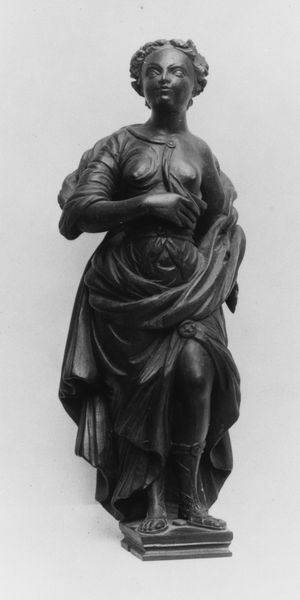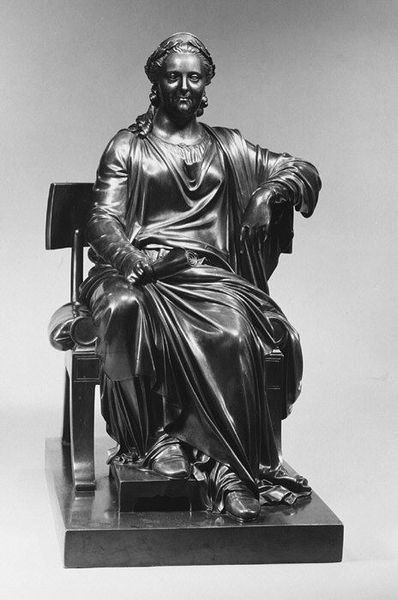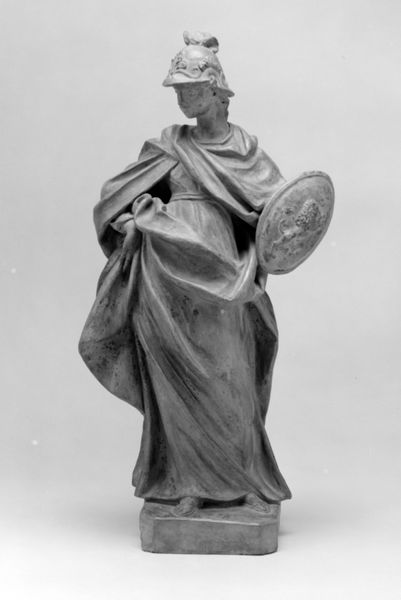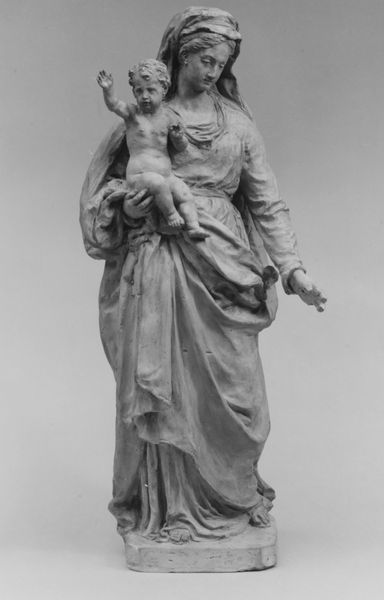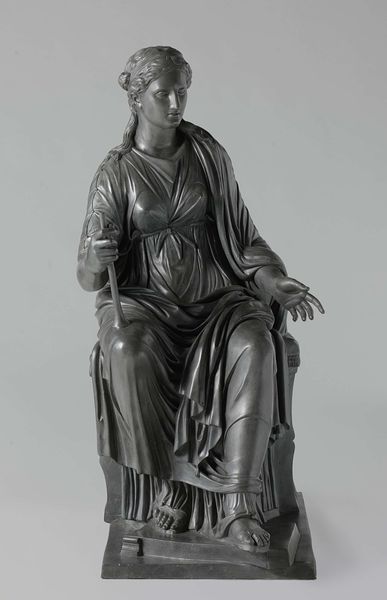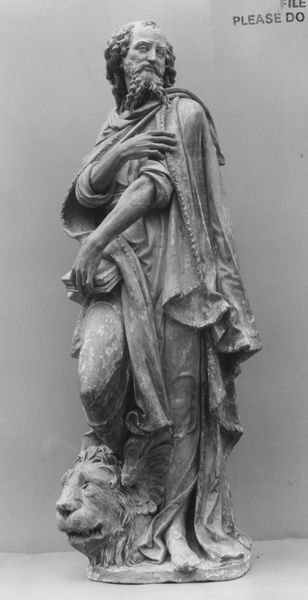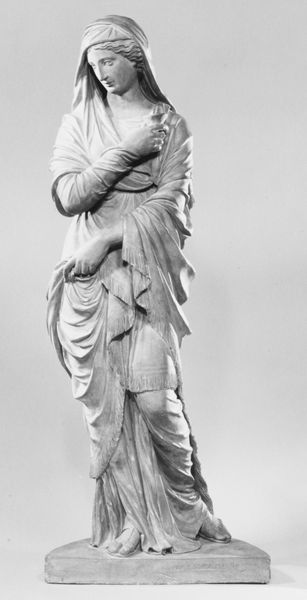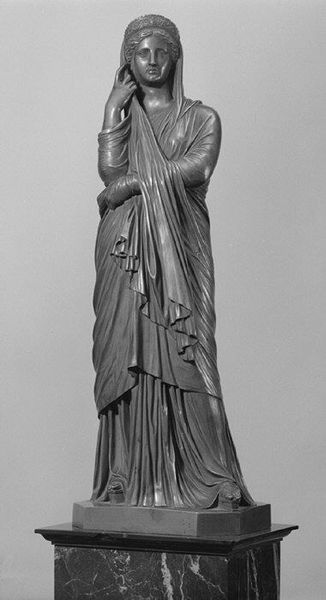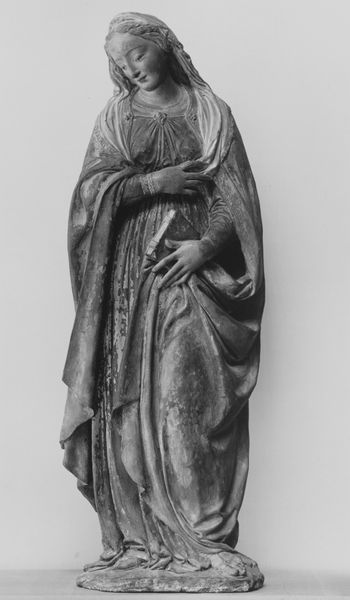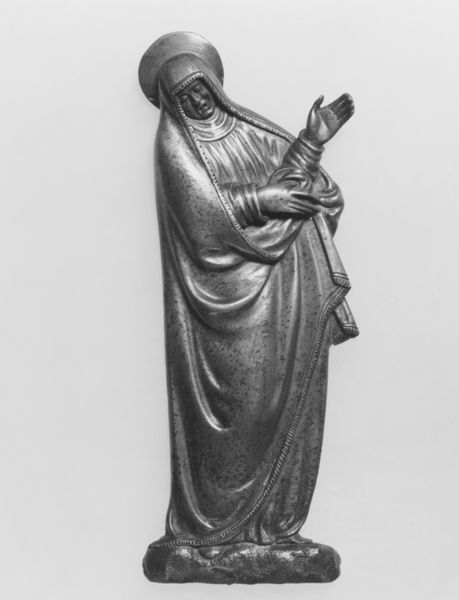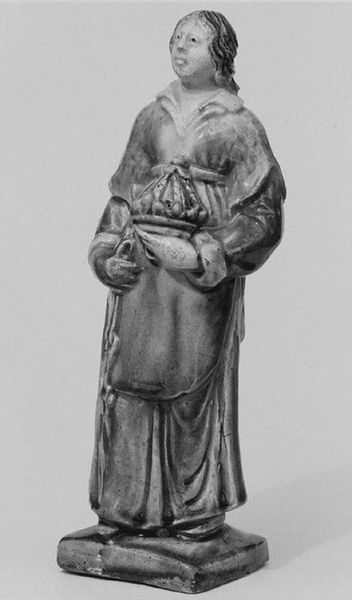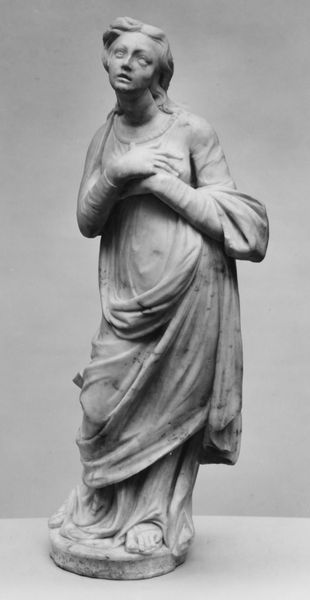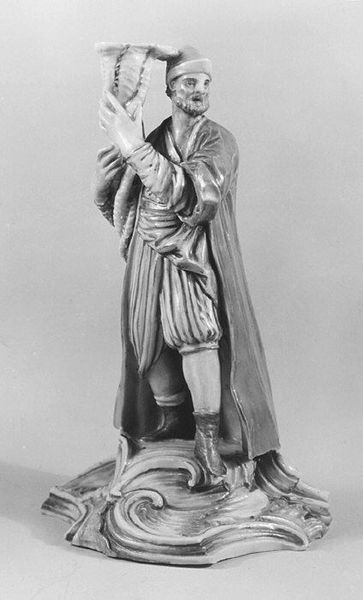
sculpture
#
3d sculpting
#
sculpture
#
frontview face
#
sculptural image
#
b w
#
unrealistic statue
#
sculpting
#
sculpture
#
black and white
#
vertical object
#
men
#
decorative-art
#
statue
Dimensions: 28 1/2 × 18 × 13 1/2 in. (72.4 × 45.7 × 34.3 cm)
Copyright: Public Domain
Curator: This is Johann Heinrich von Dannecker's sculpture, "The Muse of History," crafted between 1784 and 1794. It resides here at the Metropolitan Museum of Art. What's your initial read? Editor: She feels weighted, burdened even. The downward gaze and heavy drapery contribute to this solemnity. What was the cultural landscape that demanded such serious muses? Curator: Think about the Enlightenment era, the fervor for reason, the encyclopedic impulse to record and categorize. It seems pertinent to think about the cost of its production, perhaps with a local stone? This muse embodies history as an active force of documentation and assessment. Editor: Yes, but I can't ignore the muse as a subject – what power did women, even idealized, allegorical ones, hold at this juncture? She's not passive, but the act of ‘reading’ history becomes gendered, assigned. And let’s not forget the political undercurrent. The revolutionary fervor sweeping Europe at the time... Curator: Exactly. And in terms of manufacture, the choice of medium, likely stone, is critical. Each strike of the chisel, the time consumed - it all translates to value, prestige. Patrons desired to acquire such things and, with that, ideas. Think about the network of artists and buyers. The sculpture serves not only an aesthetic function, but a practical one as well, by reflecting societal values onto those who possess them. Editor: Definitely a period grappling with what constitutes power and its symbols. Is she intended to educate, inspire, or perhaps warn? The sculpture’s stoic face tells little, so perhaps we have to see this 'unrealistic statue' as a commentary on the limitations of history itself. Curator: Indeed. I think we agree then; "The Muse of History" captures a pivotal time. From labor and method, to the muse figure she depicts, we see evidence of how both making and ideology function. Editor: Absolutely, a marble embodiment of history as it was perceived, made, and actively shaped during those transformative years. The sculpture gives the public something tangible and representational of those processes to think about even now.
Comments
No comments
Be the first to comment and join the conversation on the ultimate creative platform.
